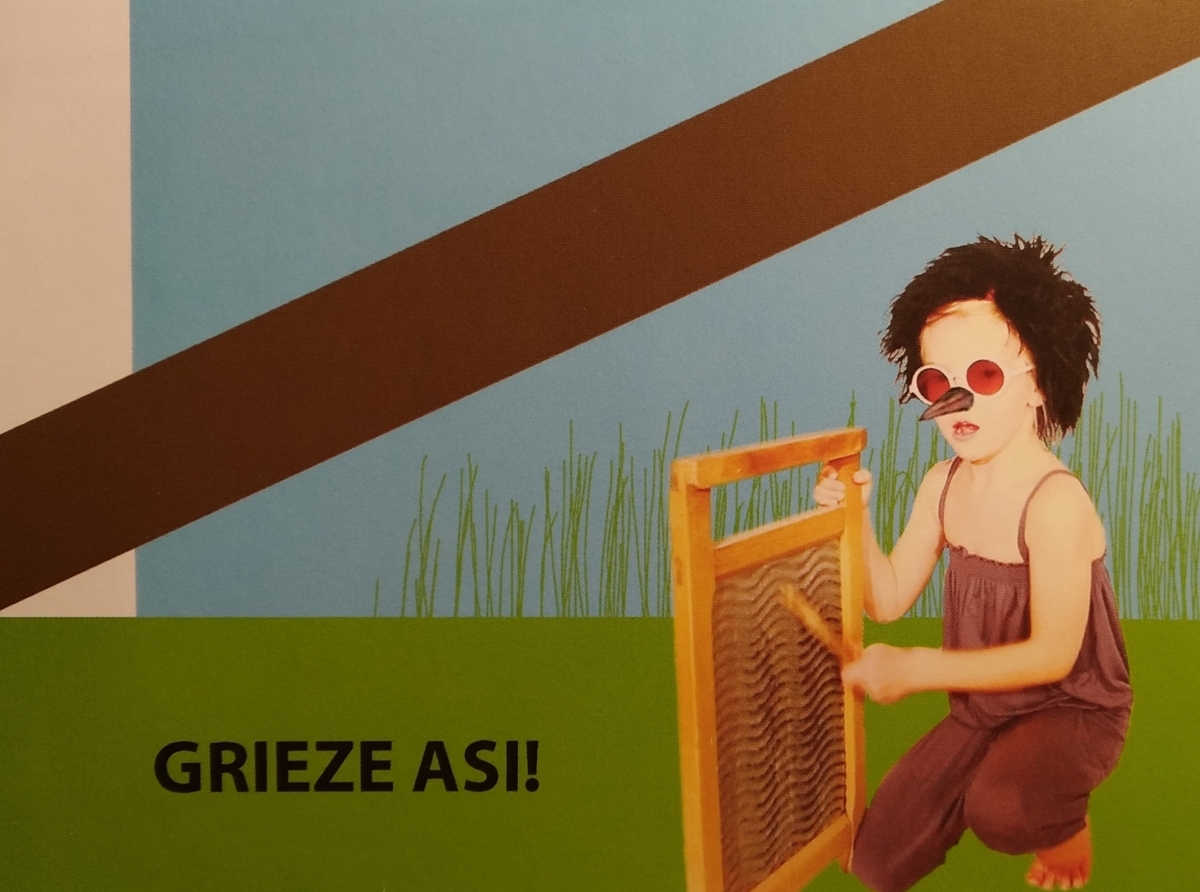Jānis Roze, the founder of the eponymous Jānis Roze publishing house, was among the first to pay attention not only to the quality of the books’ artistic design, but to take note of the opportunities provided by photography as a medium. Designs of the school textbooks that he published made use of photographs by Jānis Rieksts, Mārtiņš Lapiņš, Dāvis Spunde and others. Yet this practice was not implemented on a broader scale. Although a number of Latvian modernist artists were familiar with German designer Jan Tschichold’s concept of New Typography and the experience of Russian constructivist artists, which envisioned radical changes in type design and text layout as well as the use of photomontage – also in the layout of children’s books – these ideas did not gain popularity among the Latvian public. Hence the major publishers Valters un Rapa, Jānis Roze, and Ansis Gulbis continued to release lavishly illustrated picture books for children.
The first pioneering step was made by Miķelis Goppers, whose publishing house Zelta ābele released Klāvs Sarma’s (real name Pāvils Vīlips) book Apses bērni (Children of the Aspen) with illustrations by Zina Āre in 1942. Being a pupil of modernist Romans Suta,Āre was no stranger to the ideas of New Typography. She had previously used montages of photographs and drawings in the magazine Atpūta and other press publications. Seeing as the illustrations made use of photographs, the story of the numerous transformations of aspen matchsticks acquired a greater level of believability.
Local-historical and educational functions are also served by several books created for children in the early 1960s. They used the same approach to design. The young artists of the time – Gunārs Mitrēvics, Inta Kamara and Normunds Zvirbulis, Juris Mauriņš – all employed the photographic image. They achieved an excellent and uniform impression of the book’s overall design, with finely weighed relationships between text, photographs and either extremely laconic graphical or brightly-coloured painted backgrounds. This approach to Latvian children’s book design was evidently too bold, as no similar children’s books were published afterwards.
The majority of children’s books with photographs were made in the 21st century in the liels un mazs publishing house. Each of these have been created by leading Latvian artists, who have had different approaches and creative goals in their work with photography. Similar to Inta Kamara or Juris Mauriņš in their time, Ivars Drulle, Andris Vītoliņš, Katrīna Neiburga, Arta Ozola-Jaunarāja also made objects and then photographed their arrangements. Andris Breže used images of staged industrially produced children’s toys to illustrate his poetry. Sandra Krastiņa photographed figurines cut from paper. This has resulted in photobooks of very high quality.
Another group of photobooks represented in the exhibition shows the artists themselves taking part in the game and creating tableaux vivants in the tradition of the 19th century. Katrīna Neiburga, Mārtiņš Grauds and the team created costumes and masks, directing activities whose photographic recordings were used as illustrations in the book.
The exhibition includes books, their copies, original illustrations and photographs, photographic documentation and original installations or their elements from the artists’ personal collections.
‘Photo, Pencil, Scissors. Latvian Children’s Books with Photographs’
Participants: Zina Āre (LV), Andris Breže (LV), Rūta Briede (LV), Artis Briedis (LV), Mārtiņš Grauds (LV), Kristaps Kalns (LV), Ivars Drulle (LV), Inta Kamara (LV), Sandra Krastiņa (LV), Juris Mauriņš (LV), Guntars Mitrēvics (LV), Katrīna Neiburga (LV), Arta Ozola-Jaunarāja (LV), Ingrīda Pičukāne (LV), Krišs Salmanis (LV), Andris Vītoliņš (LV), Normunds Zvirbulis (LV)
Curator: Irēna Bužinska (LV)
June 14 – July 13, 2024
National Library of Latvia, Level 7, Mūkusalas iela 3, Riga.
Opening hours: Mon – Fri 11 – 19, Sat 10 – 17.
Free entr




